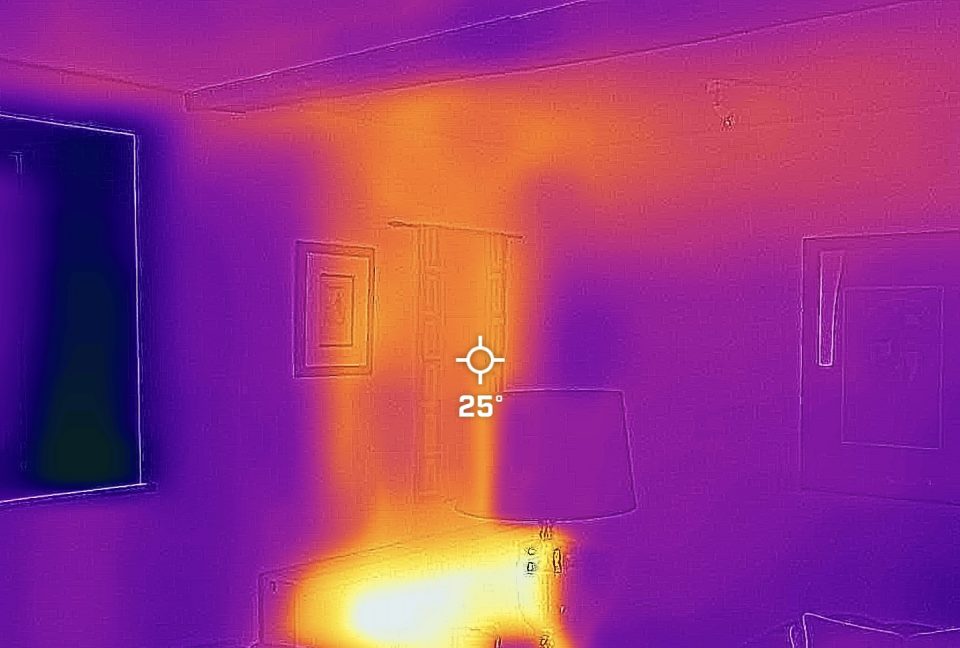Air source heat pumps (ASHPs) are an effective and efficient heating solutions for homes, offering significant savings on energy bills and reducing carbon emissions. To fully optimise the performance of an ASHP, homeowners should consider only using weather compensation rather than set point flow temperatures.
Weather compensation is a feature on most heat pumps that automatically adjusts the temperature of your heating system based on the outdoor temperature. This is achieved through the use of a sensor that monitors the outdoor temperature and adjusts the flow temperature of the heating system accordingly. In contrast, set points are temperature settings that homeowners manually program into their heating system, and the system will heat to those set points regardless of the outside temperature.
Our air source heat pump, when it was first installed, was set to run on a set point of 45C. So if it was -3C or 10C outside, our system ran at a flow temperature of 45C. As a result the system was quite expensive to run, because we didn’t need it as warm when temperatures outside were mild.
If your system is set to run on set points, it’s time to change. Weather compensation ensures that the flow temperature of the heating system is adjusted in line with the outside temperature, which means that the system will only work as hard as it needs to. If it’s 8C outside, the heat should be taking it easy. This results in a more energy-efficient heating system, lower energy bills and reduced carbon emissions.
Comfortable heat
Weather compensation also provides a more comfortable living environment for homeowners because the flow temperature is adjusted gradually in line with the outside temperature, resulting in a more consistent and comfortable indoor temperature.
Our TV room, the coldest room in the house, is a great example. When it’s 6-10C outside, with a flow temperature of 45C, when you walk in you can feel the heat. It’s not uncomfortable, but you feel the gentle warmth on your face. The room is cosy, but after spending some time in it it becomes noticeably warm. The target temperature is 21C. At the same target temperature (21C), with weather compensation activated, when you enter the TV room it feels normal – it’s not cold, it’s not warm. It’s down the line. No warmth on your cheeks, and the room is also at 21C. So both achieve the same target temperature, but weather compensation is using between 30-35% less electricity on mild days (above 6C). It’s a massive saving.
What’s clear in the thermal images of the TV room below, is that the radiator is at 30C, with the air rising at 25C and moving across the room to keep it at our target temperature of 21C (the sofa). The ambient temperature was 6C outside and the flow temperature was at 34C.



The perception of warmth
If you’re used to your radiators being hot and blasting out heat there’s a definite mental adjustment required. Your rads will not feel warm or hot to the touch with weather compensation on. They may even feel cool. But give it two to three days and you’ll see that rooms are maintaining targeting temperatures (if you’ve set your weather compensation heat curves correctly).
On that note, the perception of warmth or coolness is influenced by a number of factors, including the temperature of the radiator, the temperature of the surrounding environment and the sensitivity of the skin to temperature changes. In general, when the temperature of an object is higher than the temperature of the surrounding environment, it will feel warm to the touch, and when it is lower, it will feel cool.
When you touch a radiator that is 45C, your skin quickly detects the temperature difference between the radiator and your body, and your nerves send signals to your brain that interpret the sensation as warmth. However, when you touch a radiator that is 35C, the temperature difference is much smaller, and your skin may not detect the difference as strongly, leading to a sensation of coolness.That does not mean that the radiator is not heating the room. It is!
FLIR ONE Thermal Camera
We used the FLIR ONE Thermal Camera which is really handy to check the temperatures of radiators, rooms and underfloor heating, and to also check for places that your property is leaking heat, which we detail in the video below.
You can buy the FLIR ONE Thermal Camera: https://amzn.to/3zhErSA


